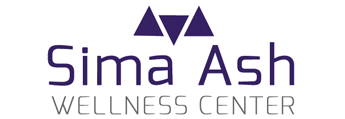Environmental Health Perspectives cites endocrine disruptors such Bisphenol-A (BPA) as one of the top ten chemicals they consider highly likely to contribute to autism, ADHD and learning issues in general. So what is BPA and why is it so bad?
BPA is commonly used to make polymers and resins in plastic such as in cans, baby bottles, water bottles, dental sealants and even the plastics used to wrap up meats and other items at the grocer; but it was originally developed as a synthetic estrogen and scientists have recently discovered that BPA can mimic estrogen in the body. BPA is used to make an epoxy for the lining of more than 85% of cans produced each in the U.S. but is banned in baby bottles and sippy cups.
In fact, links have been made between BPA exposure to diabetes, obesity, some cancers, thyroid disorders, aggression, infertility and most recently to autism and other learning issues; prompting environmentalists to call for a ban on BPA. The FDA, however, did not agree and for the time being, is allowing the continued use of BPA in products. In 2010 Canada's department of the environment declared BPA to be a ‘toxic substance’ and has therefore banned BPA.
Pete Myers, chief scientist and CEO of Environmental Health Sciences shared the method used to measure the safety of a chemical. He states that scientists experiment with a very high dose and decrease it until they reach a response does that shows no difference in reactions between the exposed and controls. They then divide that dose by about 1,000. “That’s the reference dose considered safe,” said Myers. “But it’s never tested.” The problem is hormones and compounds that act like hormones can have very powerful effects at very low doses, exactly where the compound is considered ‘safe’.
A study conducted in November of 2011 and published in Pediatrics indicates gestational BPA exposure affected behavioral and emotional regulation of children at 3 years of age, especially among girls.
A March 2011 study published in Neurotoxicology utilized the urine from mothers during their third trimester of pregnancy. Follow up was done 7-9 years later to determine if the BPA amount in their urine had any implications on the children with the researchers asking mothers to complete an Autism Social Test. Researchers found that mothers with higher BPA in their urine had children with greater social deficits – including poorer social cognition, social communication, and social awareness.
A recent study published in the Journal of the American Medical Association found a link between BPA and obesity. Scientists measured concentrations of BPA in urine and found children with higher concentrations of the chemical were more likely to be obese than children with lower concentrations. The study showed that 17.8% of children and adolescents were considered obese and 34.1% were overweight. The group with the highest BPA concentrations were also the most overweight/obese.
Minimize Your BPA Exposure By Following These Simple Steps:
- Select BPA-free products
- Avoid plastic identified as #1, #6 and #7
- Do not microwave plastic containers – use glass or ceramic containers instead
- Avoid canned foods and beverages
- Choose glass, ceramic or stainless steel containers
- Use BPA-free baby and water bottles
- Thoroughly wash your hands after handling money and cash receipts
- Make conscious choices when it comes to plastic use around the house
- Avoid washing plastic containers in the dishwasher or with harsh detergent
Currently, the safest water bottles are stainless steel (use for water only as tea, lemonade, etc. can cause nickel to leach from the bottle) and Polypropylene bottles marked with a 5 inside of a triangle. This also pertains to sandwich containers for your child’s lunch or anything used to store food. Sticking to these two options will minimize your exposure to BPA.
BPA is also found in soft plastic toys and those usually carry the same marking. Please check your child’s toys, especially if they are in the mouthing stage to assure they are not being exposed.
How to Detox from BPA
CEASE Therapy – BPA detox remedies are available and used during an overall CEASE Therapy protocol. CEASE therapy takes a systematic approach, detoxing your body from BPA, antibiotics, medications, etc. and helps bring you back to balance. BPA detox has been used as part of CEASE Therapy since its inception and has helped many children with autism and well as adults.
Far Infrared Sauna – Both help to detox the body naturally from BPA.
Turmeric – Aids the liver in escorting BPA out of the body. Usually it has to be consumed in large doses, however higher potency capsules are available to help you get the required amount.
Sima Ash, Director of Healing 4 Soul, combines her expertise in whole-body health and medical research to educate everyone about the newest developments in detoxification and chronic diseases. To schedule,your consultation call our office at (800) 669-0358.
WE ARE HERE TO EDUCATE, NOT MEDICATE





